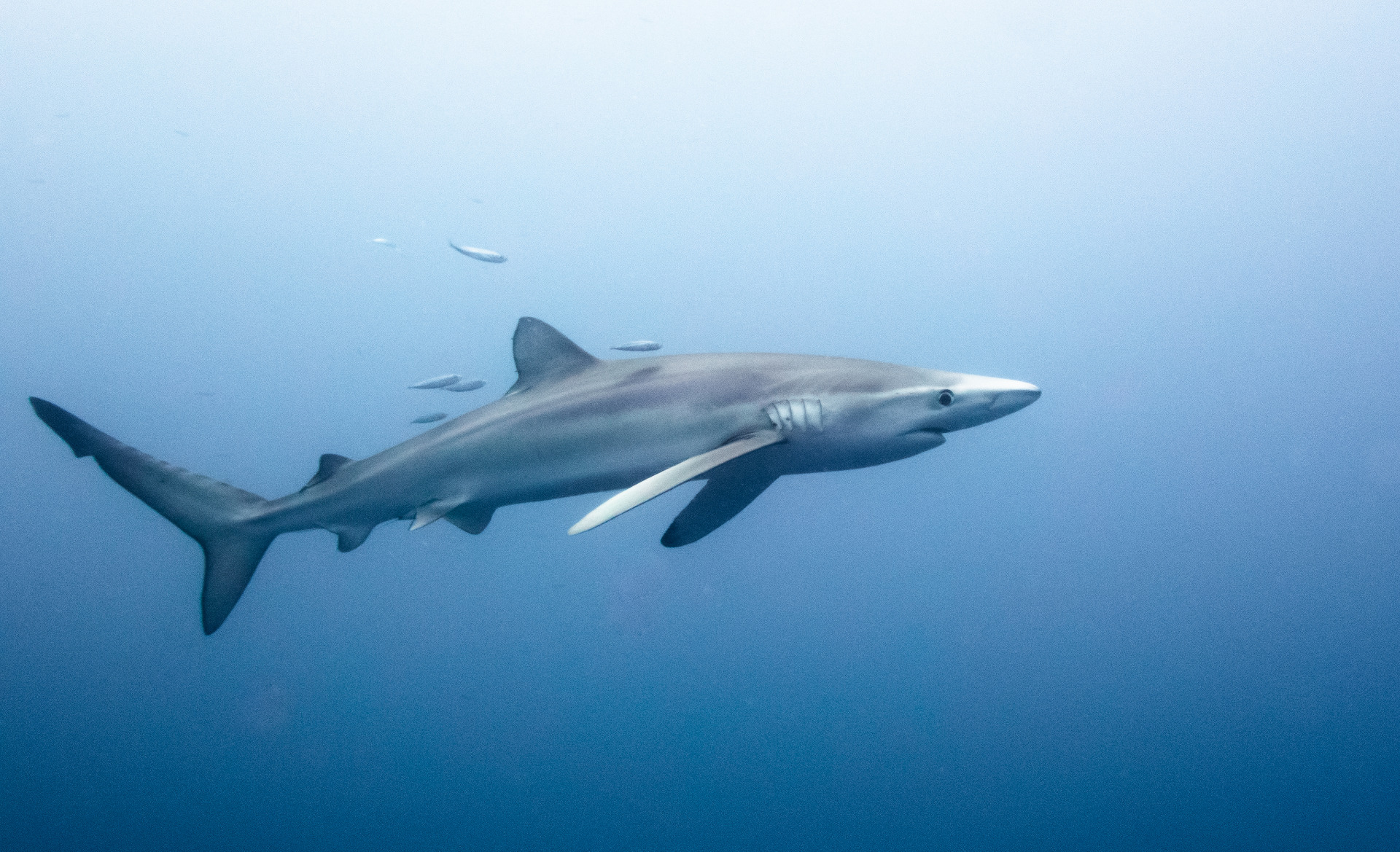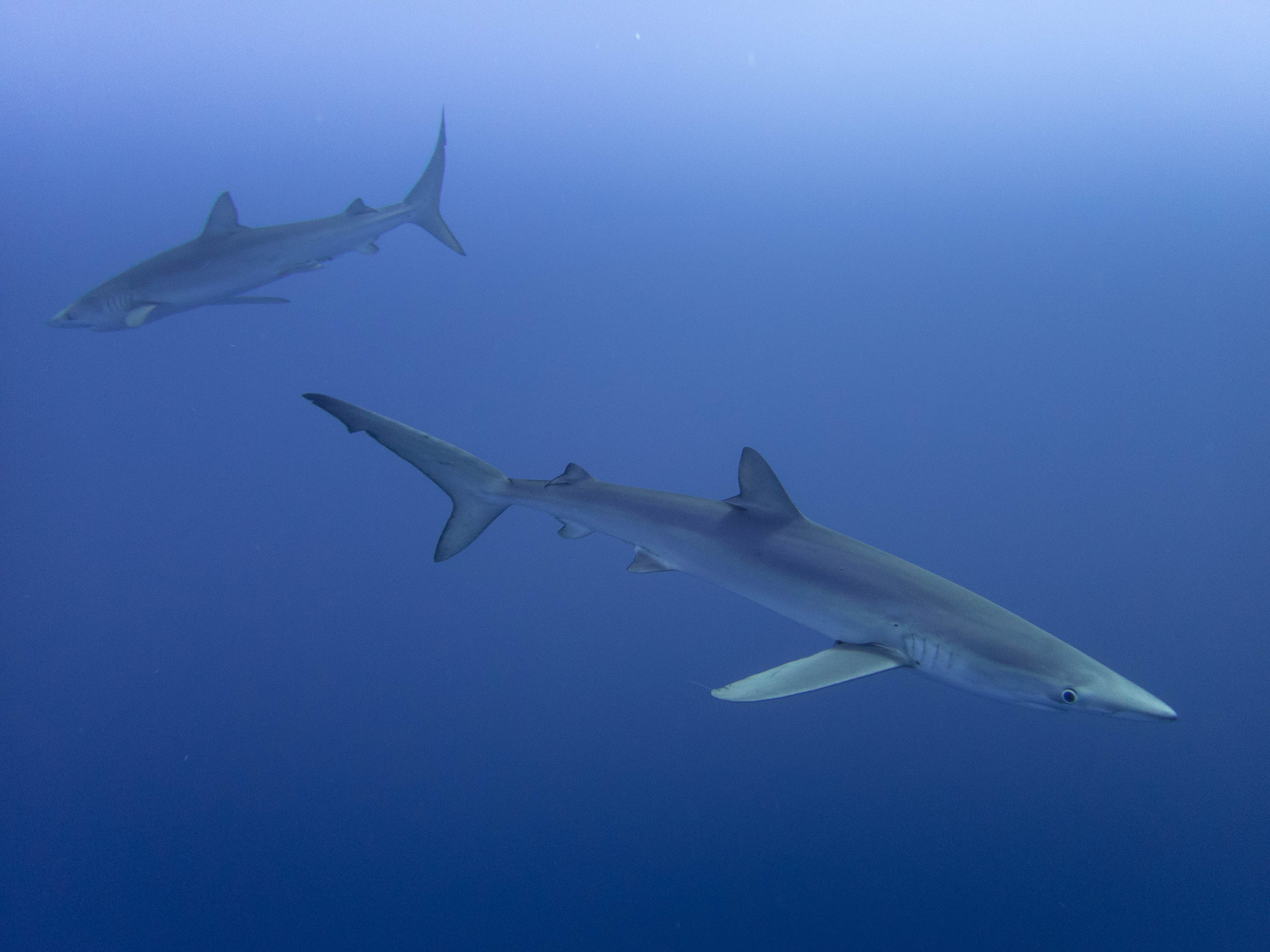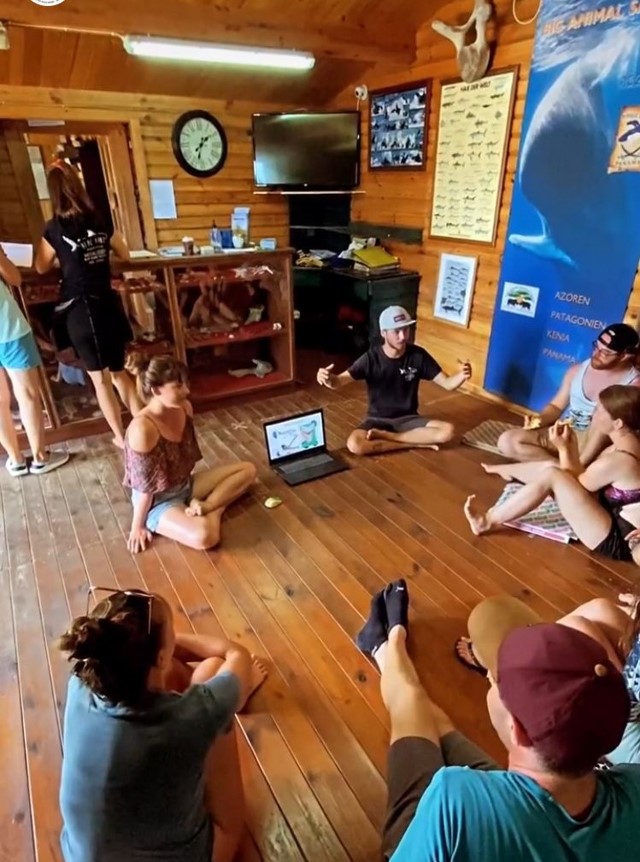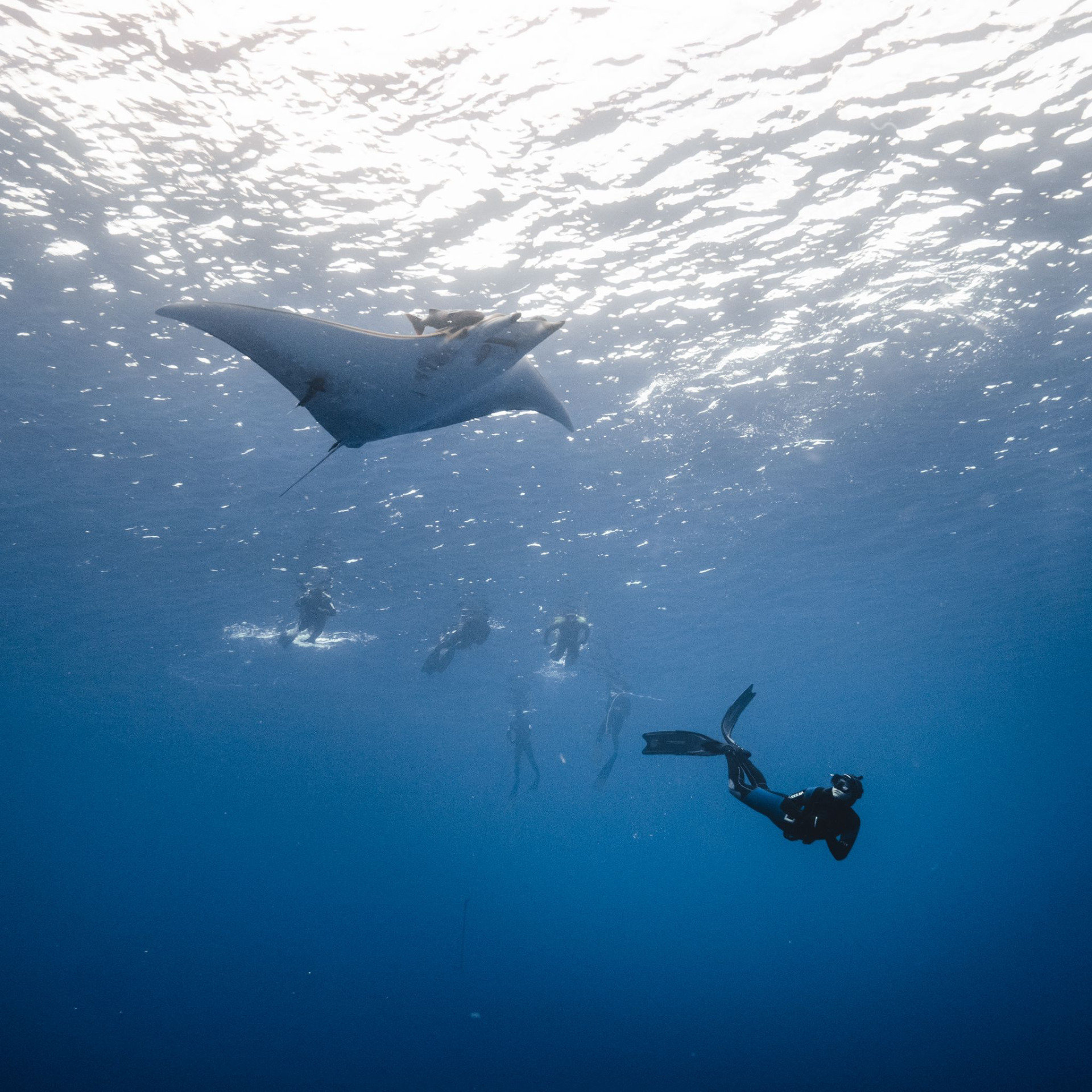
Megalodon-Project
The Megalodon project is a collaboration between the Diving & Whale Watching industry, NGO´s and local scientists from the Azores Islands, mainly located on Pico and Faial. Its aim is to create awareness and collect evidence through science to
motivate politicians to extend and connect existing marine reserves, establish a more effective management strategy and protect endangered species.
Therefore, various programs and activities were established to collect funds to finance the
on-going scientific work and to change the minds of people and decision-makers. Follow the link for more information
My partner and I joined the project through the summer season 2022 and worked together closely with one of the dive centers on Pico Island.
The Azorean Archipelago is an absolute hot-spot for many migrating marine species. Its unique geomorphology provides important feeding, mating and nursery areas and throughout the year different marine megafauna gather in surrounding waters. Throughout the year many different types of whales, mobular rays and pelagic sharks such as shortfin-mako, blue and whale sharks can be observed.
Accompanying diving and freediving trips during the months of July, August and September, we collected biological data of encountered sharks and mobular rays as well as recorded specific environmental conditions such as current, water temperature, plankton and weather. All the collected information was shared with Jorge Fontes and his team at the University of Faial, who is the leading researcher when it comes to shark conservation in the Azores.
Our work

Laser-Photogrammetry
To collect measurements of blue sharks, mako sharks and mobular rays we used a non-invasive method called laser-photogrammetry. Two lasers were mounted on a metal frame spaced 25cm apart and a camera was placed In the middle of the frame. The lasers work as a reference, same as a ruler or tape measure for example, that we can "put on" the shark. Using the (as we know they are 25cm apart) to later calculate 25cm as reference, we can then calculate the total length of a shark or mobular ray.

Education & Awareness
The second part of our work- and arguably equally important to collecting scientific data - was to share our knowledge and passion for our ocean, especially for sharks and rays. Throughout the season we gave talks and presentations on the importance of the Azores and surrounding seamounts for many resident and migrating megafauna species, about current threats and potential solutions. From giving presentations to joining shark dives with customers - our ambition was not only to simply share knowledge and facts, but to help create positive emotions and relationships when it comes to the ocean and some of its most charismatic animals.
